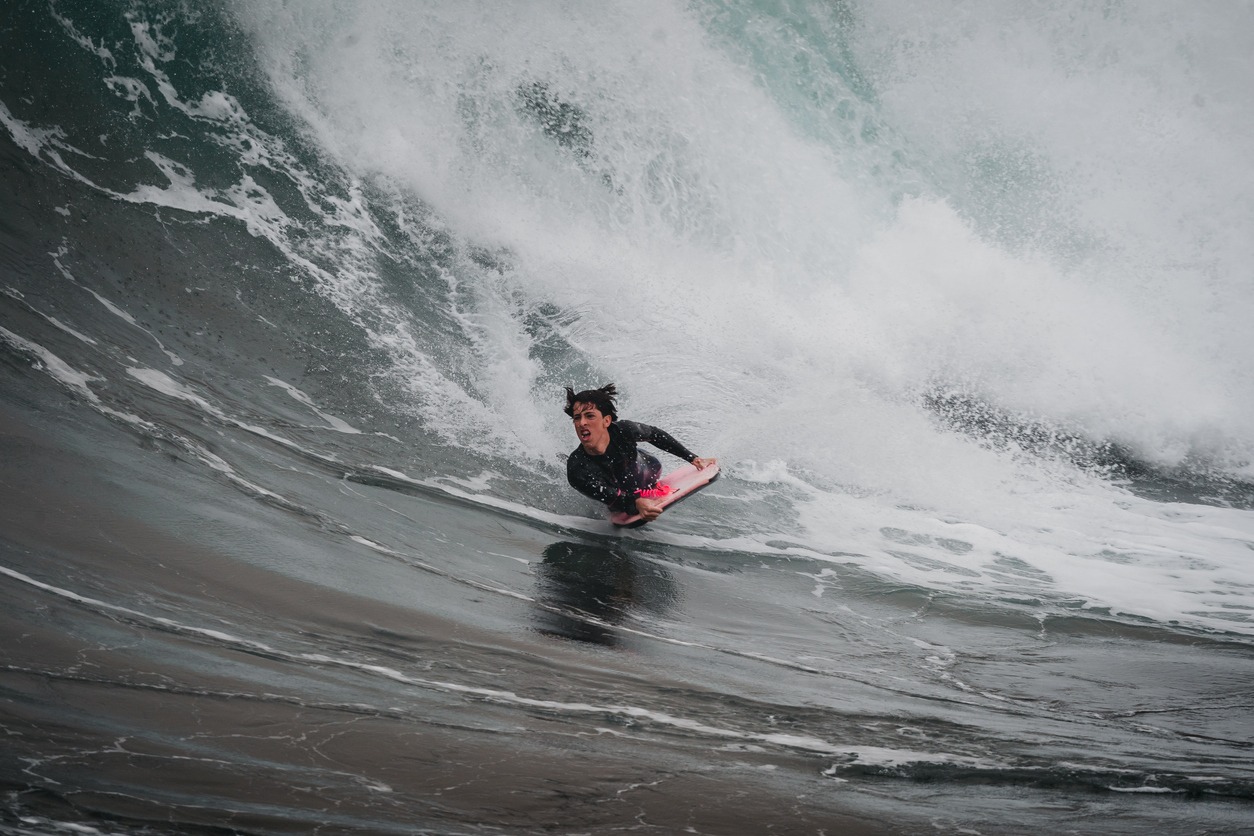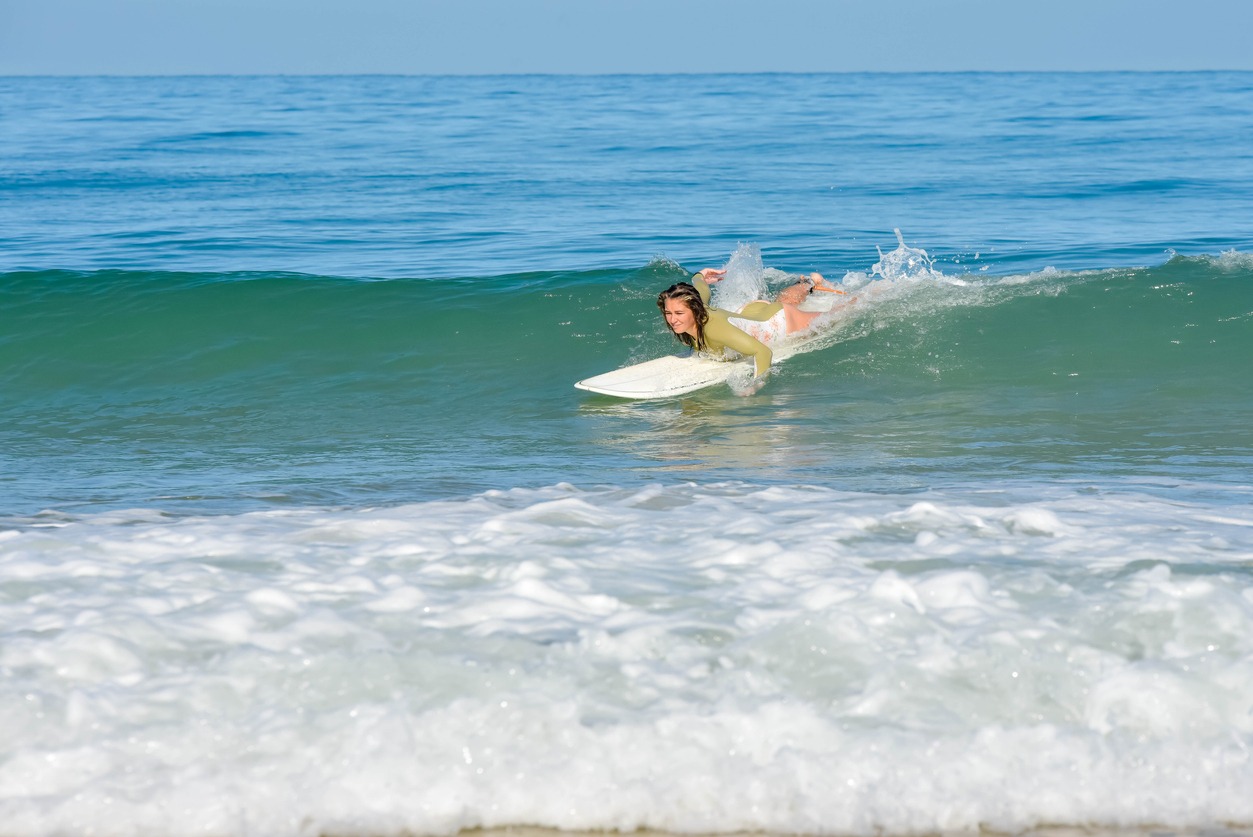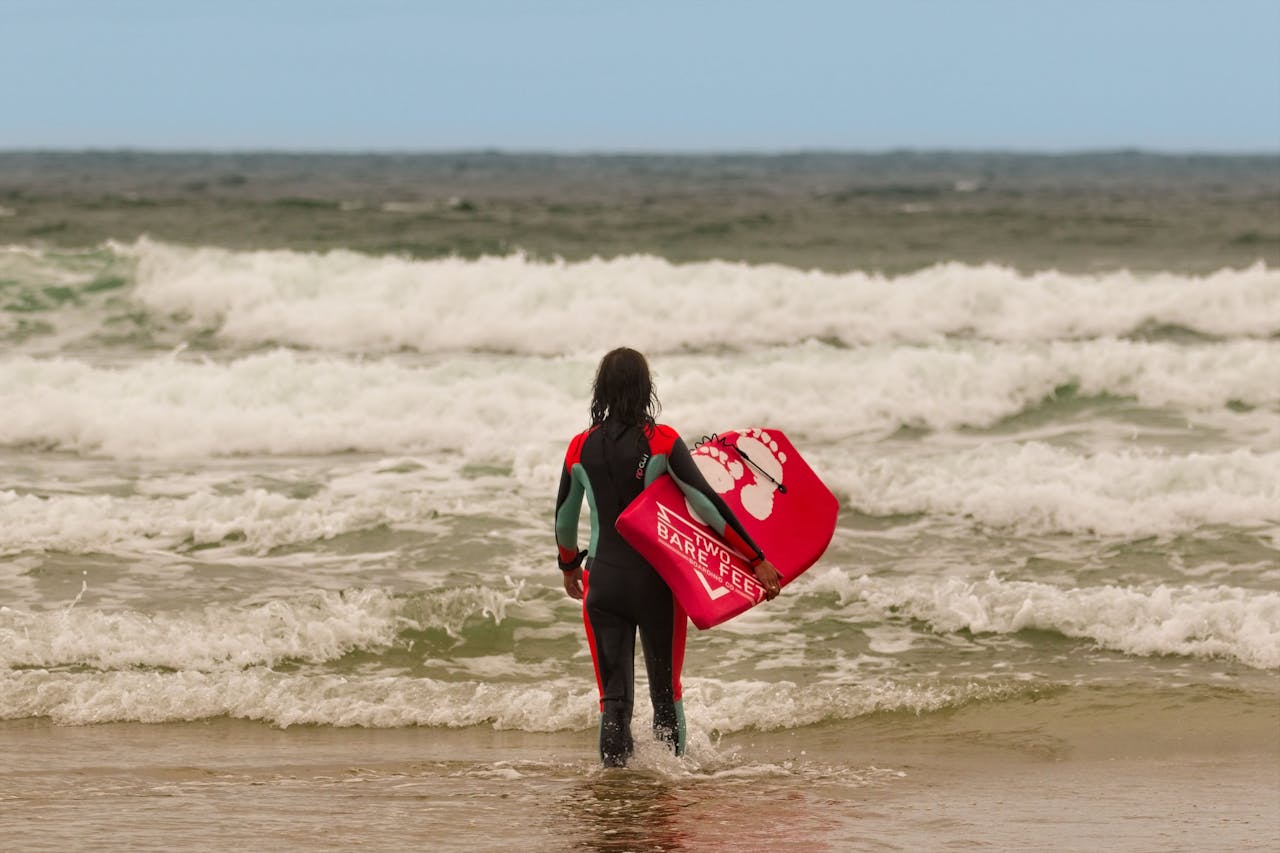Is Bodyboarding a Competitive Sport? An Overview of Events and Rules
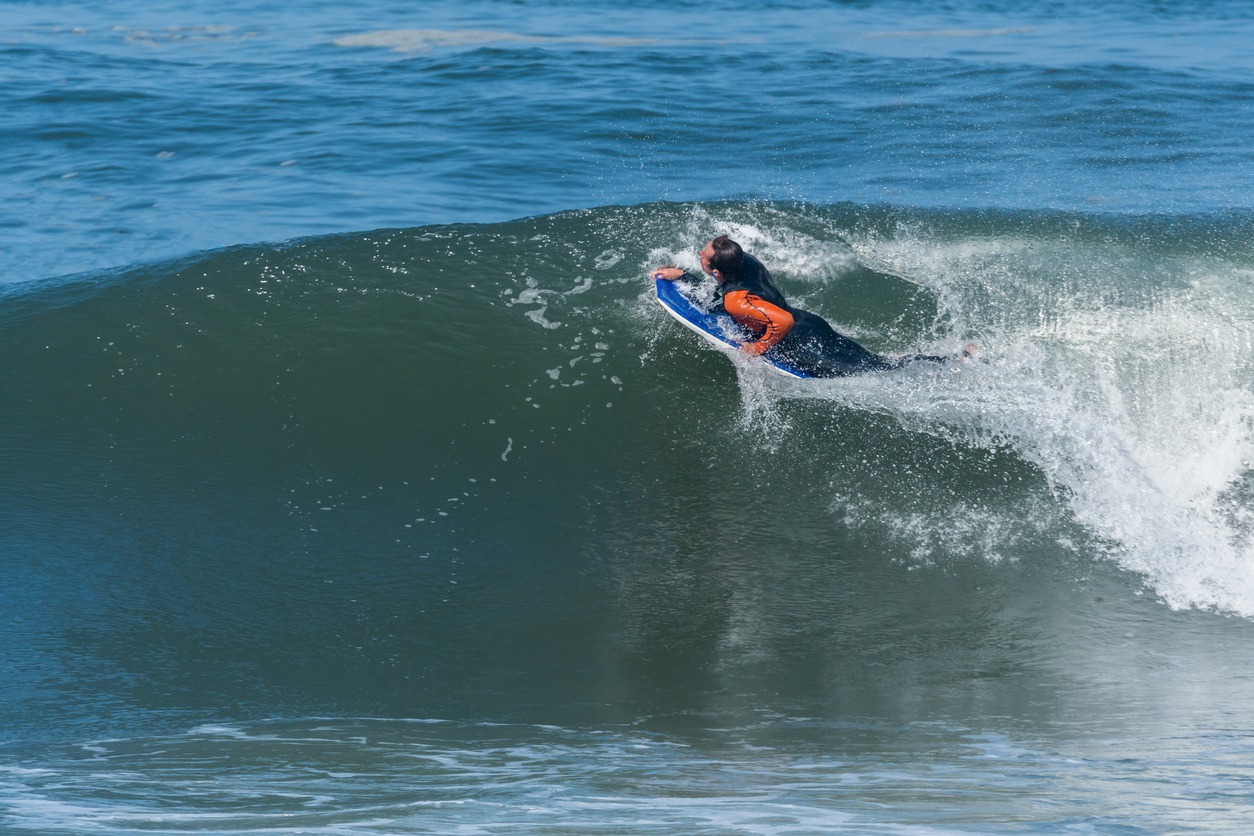
Bodyboarding has indeed become a competitive sport since the 1970s. You'll find professional athletes competing in global events like the APB World Tour and IBA World Tour. These competitions feature various categories based on age, gender, and skill level. Judges score riders on wave selection, maneuver execution, and overall impression using a 10-point system. Equipment regulations guarantee fairness, with specific requirements for bodyboard materials and dimensions. Professional organizations like the IBA and APB govern the sport, establishing rules and organizing events worldwide. Exploring the world of competitive bodyboarding reveals a thrilling arena where skill, style, and daring converge.
The Evolution of Competitive Bodyboarding
Throughout the years, competitive bodyboarding has evolved from a niche hobby into a globally recognized sport. The 1970s marked the beginning of this metamorphosis with the inaugural International Morey Boogie Bodyboard Pro Championships at Hawaii's Pipeline. This event set the stage for the sport's growth and professionalization.
In the 1990s, the establishment of the International Surfing Association (ISA) brought further legitimacy to competitive bodyboarding. The ISA organized the first official World Bodyboarding Championships, elevating the sport's status on the international stage. Wave riders from around the globe could now showcase their bodyboarding skills and techniques on a world-class platform.
The sport's progression continued with the founding of the Association of Professional Bodyboarding (APB) in 2011. The APB now administers the premier World Tour, featuring top bodyboarders competing at renowned breaks worldwide. This tour has become the pinnacle of international bodyboarding, attracting elite athletes and pushing the boundaries of wave riding.
Today, competitive bodyboarding spans various categories based on age, gender, and skill level. Events are judged on criteria such as wave selection, maneuver execution, and style, highlighting the athleticism and creativity of professional bodyboarders in world championships.
Major Bodyboarding Competitions Worldwide
The world of competitive bodyboarding offers a diverse array of events for athletes to showcase their plunge. At the pinnacle of the sport, you'll find the Association of Professional Bodyboarding (APB) World Tour, where riders battle it out at iconic breaks like Teahupo'o and Pipeline. The International Bodyboarding Association (IBA) World Tour is another prestigious circuit that features top male and female athletes from around the globe.
If you're looking for single-event competitions, the Sintra Pro in Portugal and the Shark Island Challenge in Australia are must-see contests. The Pipe Classic, held at Hawaii's legendary Banzai Pipeline, is one of the longest-running and most respected bodyboarding events in the world.
But it's not just about the big waves and professional bodyboarding. You'll find numerous national and regional championships worldwide, catering to various skill levels. These events provide opportunities for aspiring riders to hone their skills and potentially make their way to the world championship stage.
From boogie board beginners to seasoned pros, the competitive bodyboarding scene offers a thrilling platform for riders to push their limits and showcase their talents on the world stage.
Competition Formats and Categories
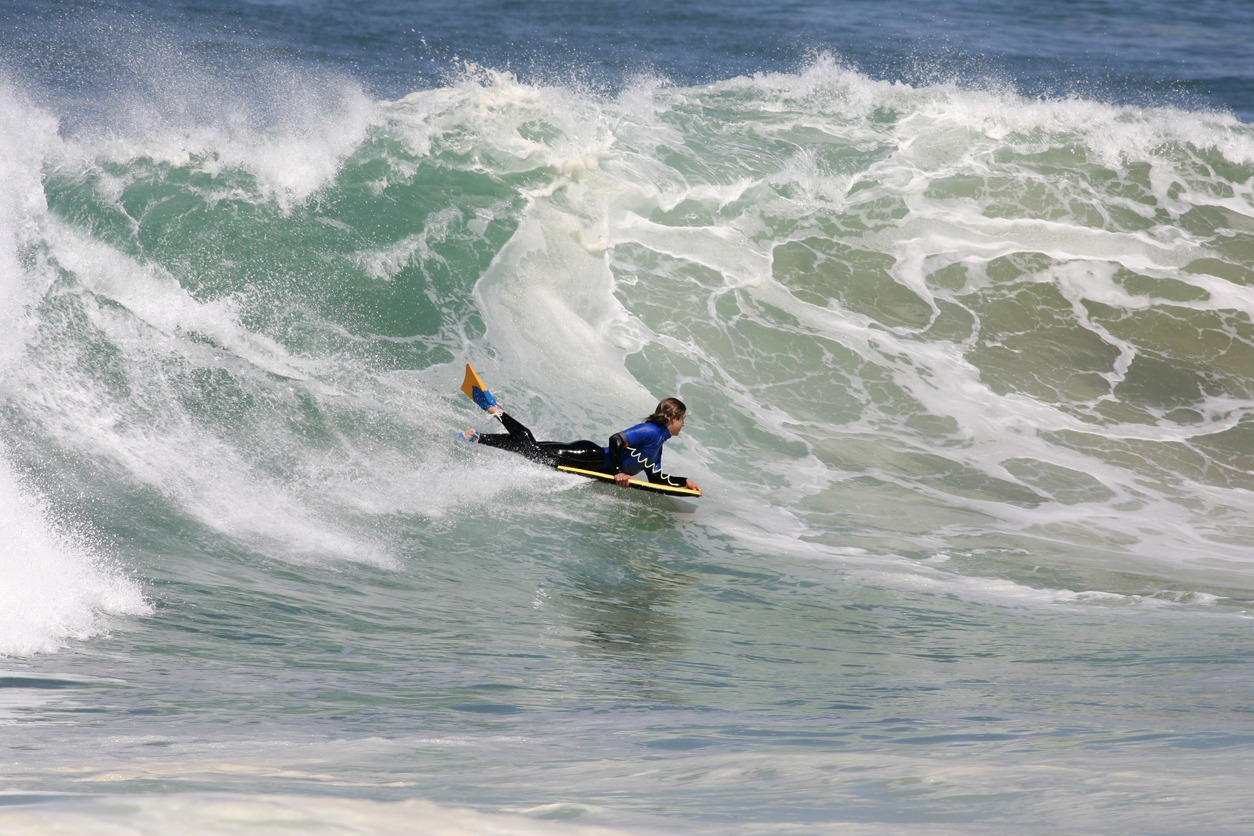
Competitive bodyboarding offers a diverse range of formats and categories to cater to riders of all skill levels and styles. You'll find individual and team events at sanctioned competitions organized by governing bodies like the International Bodyboarding Association (IBA) and Association of Professional Bodyboarding (APB). Competitions showcase both prone and drop-knee riding styles, allowing athletes to demonstrate their versatility.
Categories are typically divided by age and gender, with junior, open, and masters divisions for both men and women. During heats, you'll see riders taking turns catching waves while judges score their performance based on wave selection, maneuver execution, and overall impression. As the competition progresses, riders advance through elimination rounds, with top performers moving on to finals where champions and title holders are determined.
If you're interested in team competitions, you'll witness national or regional squads going head-to-head. The best combined scores from individual riders determine the overall winning team, adding an exciting dimension to the sport. This format promotes camaraderie and national esteem while showcasing the depth of talent within each team.
Judging Criteria and Scoring System
Understanding the judging criteria and scoring system is essential for both competitors and spectators in bodyboarding contests. You'll find that competitions use a 10-point system, where judges evaluate various aspects of a rider's performance. They're looking at wave selection, maneuver execution, risk-taking, and overall impression to determine scores.
When you're watching a competition, you'll see judges awarding points for how well riders complete critical sections, their technical difficulty, and how effectively they leverage the wave's power and shape. The highest-scoring elements you'll witness are aerial maneuvers, barrel riding, and unique combinations of turns and tricks. These are the moves that'll really impress the judges and amplify a rider's score.
Competitors are scored on a scale of 0 to 10, with top performances typically landing between 7 and 9 points. To determine the overall heat score, judges take the rider's two highest-scoring waves. It's this combined score that decides who advances to the next round, so consistency is key in bodyboarding competitions.
Equipment Regulations in Competitions
Bodyboarding's competitive integrity hinges on strict equipment regulations. If you're considering competing, you'll need to familiarize yourself with the governing body's rulebook. Your bodyboard must meet specific size, weight, and construction requirements to be competition-legal.
Allowable materials for bodyboards include high-density polyethylene (HDPE) bottom skins and cross-linked polyethylene (XLPE) or expanded polystyrene (EPS) cores. You'll find that customization options are limited, with restrictions on stiffeners, rails, and other modifications that could provide an unfair advantage.
During competition heats, you're required to have a leash attached to your bodyboard. This safety measure prevents you from losing your board in the water and guarantees fair play. Additionally, you'll need to wear specialized fins designed for bodyboarding. These fins are indispensable for generating thrust and maintaining maneuverability while riding waves.
Professional Bodyboarding Organizations
While many view bodyboarding as a recreational activity, it's also a highly competitive sport with professional organizations governing its top-tier events. The International Bodyboarding Association (IBA) and the Association of Professional Bodyboarding (APB) are the two main bodies organizing professional bodyboarding competitions worldwide.
The IBA World Tour features events across various countries, catering to different age groups and skill levels for both men and women. On the other hand, the APB World Tour is considered the pinnacle of professional bodyboarding, attracting elite riders vying for the world champion title.
Both organizations have established thorough rules and regulations covering:
- Equipment specifications
- Event structure and formats
- Judging criteria and scoring systems
- Athlete eligibility and rankings
These guidelines guarantee fair competition and maintain the sport's integrity at the highest level. Additionally, the International Surfing Association (ISA) has recognized bodyboarding as an official discipline, further legitimizing its competitive status.
As you watch professional bodyboarding competitions, you'll witness:
- Athletes performing gravity-defying aerial maneuvers
- Riders expertly navigating massive barrels
- Intense battles for wave priority
- Judges carefully scoring each ride based on difficulty and execution
This structured competitive environment demonstrates that bodyboarding is indeed a serious and exciting professional sport.

